6 Easy Ways to Tell If a Watermelon Is Ripe
Nothing says summer like a sweet, juicy watermelon. But finding a ripe watermelon from the pile can feel like a guessing game… unless you know what to look for. Here’s a step-by-step guide to picking a winner, based on six tried-and-true signs: webbing, field spot, shape and weight, shine, the stem, and knocking.
1. Webbing
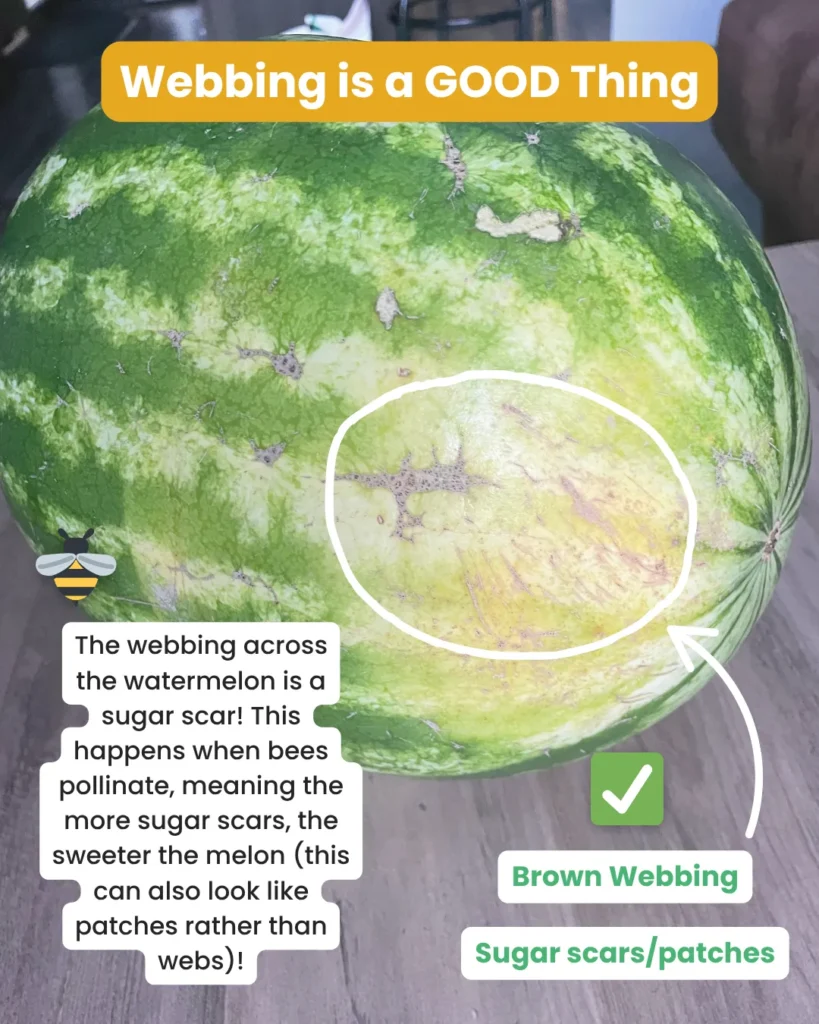
Webbing is the brown, web-like scarring you’ll see on the rind. These marks are actually a sign that the watermelon is ripe! They form where pollination occurred, and the more pollination, the sweeter the melon is likely to be. Don’t shy away from picking a watermelon with a bit of webbing; it’s often an indicator of good flavor.
2. Field Spot
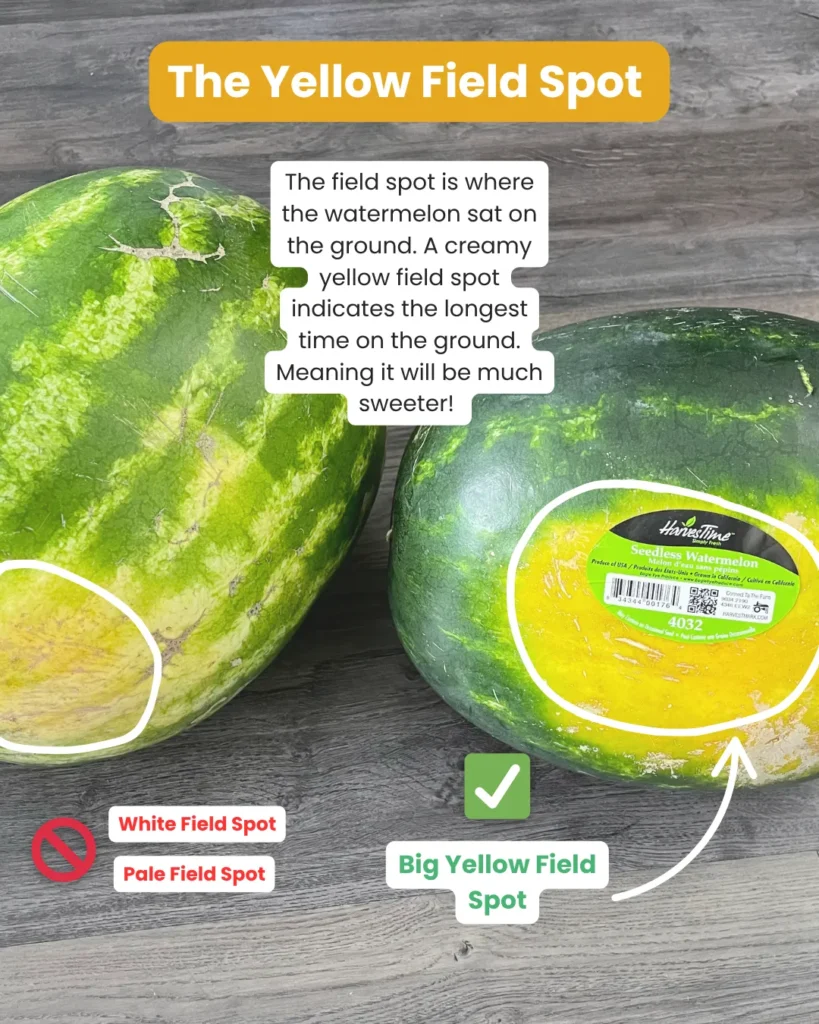
The field spot is the creamy, yellowish patch where the watermelon rested on the ground while it ripened. A deep, buttery yellow field spot usually means the melon stayed on the vine long enough to develop natural sweetness. If the spot is pale or white, it may have been harvested too early. This is one of the best tricks to use when finding a ripe watermelon.
3. Shape & Weight
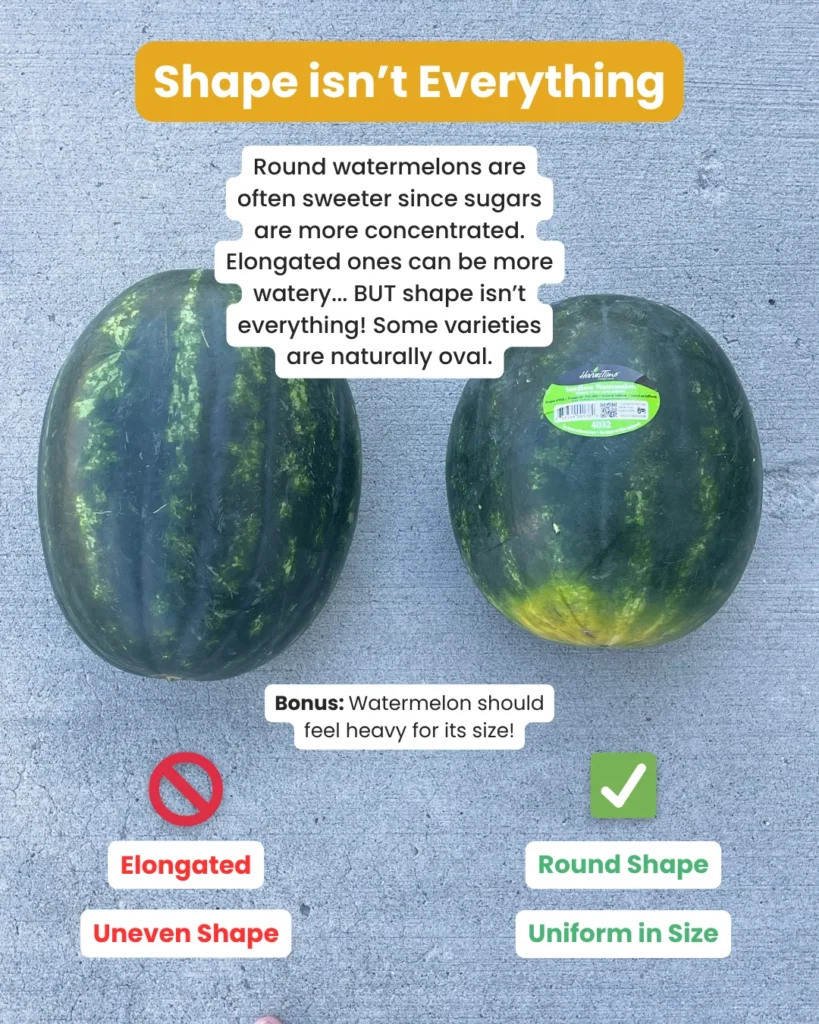
Shape: Round and uniform watermelons tend to be sweeter, as sugars concentrate more evenly. Elongated melons can be more watery, although some varieties are naturally oval!
Weight: Pick up a few melons of similar size. The heaviest one is often the juiciest, since more water content means more hydration (and flavor).
4. Shiny Rind
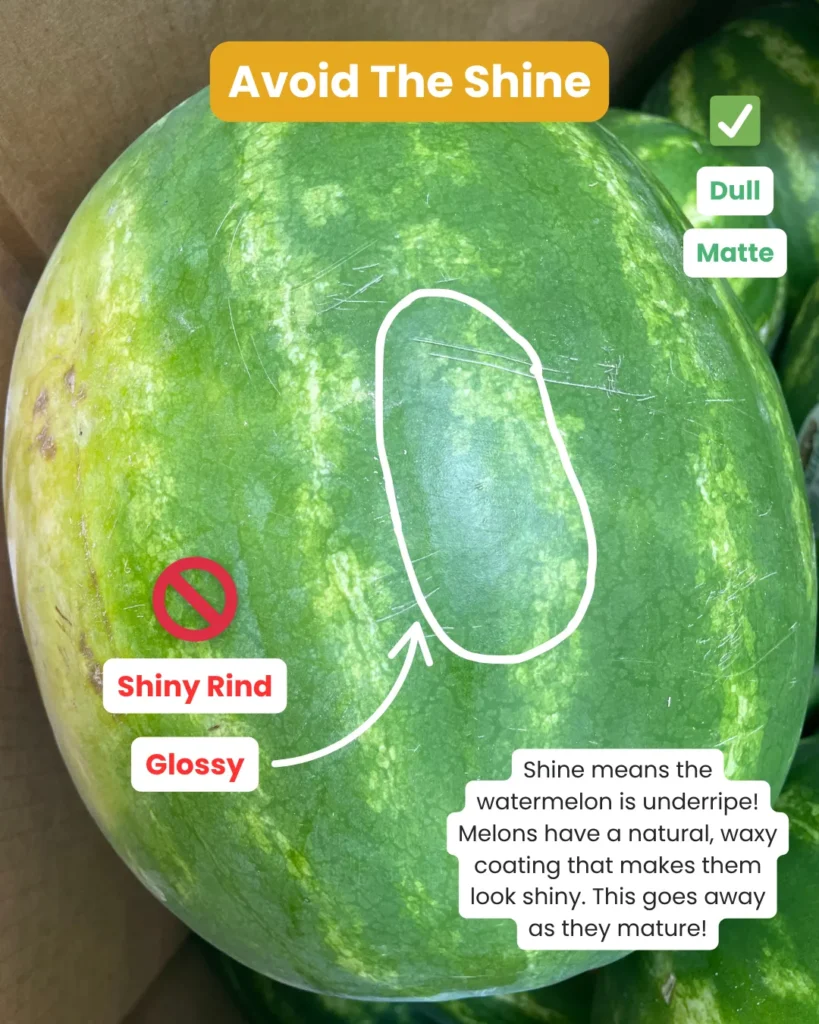
A dull rind is a good sign that the watermelon is ripe. A shiny exterior can mean it was picked before reaching full maturity. Matte is what you’re aiming for.
5. Stems
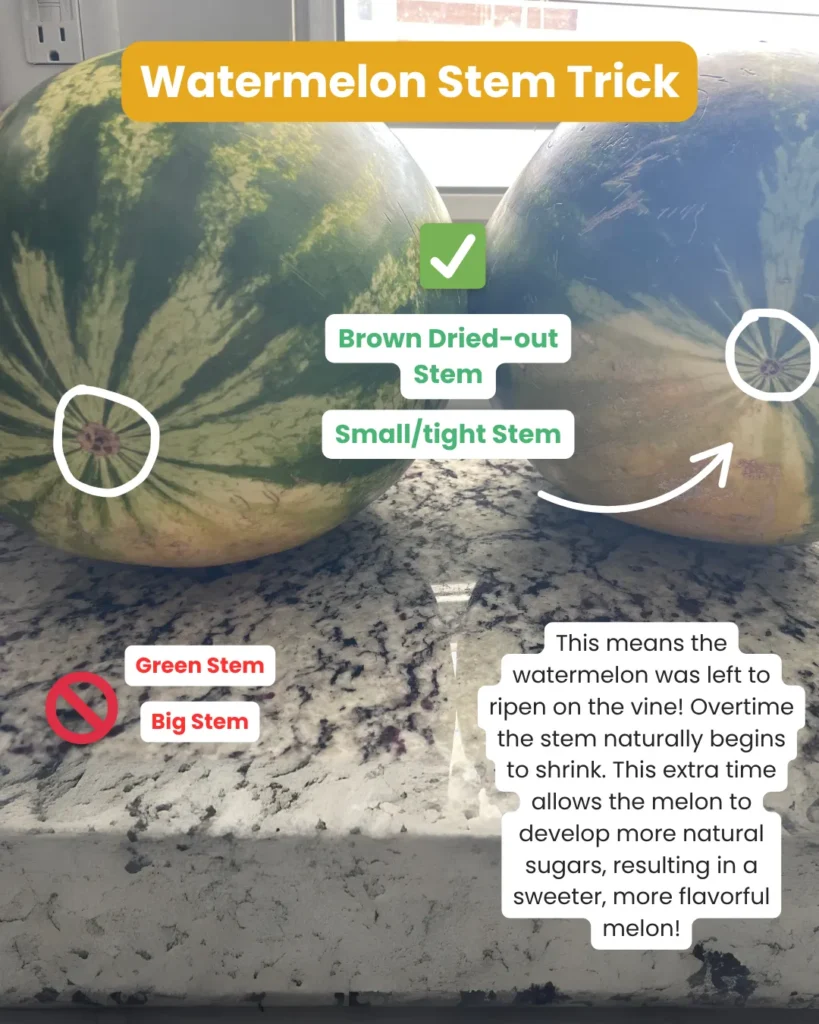
The stems color and size can tell you lots! A dried, brown, small/tight stem usually means the watermelon is ripe, as it sat on the vine for longer before harvesting. A green, big stem can indicate it was harvested too soon.
6. Knocking
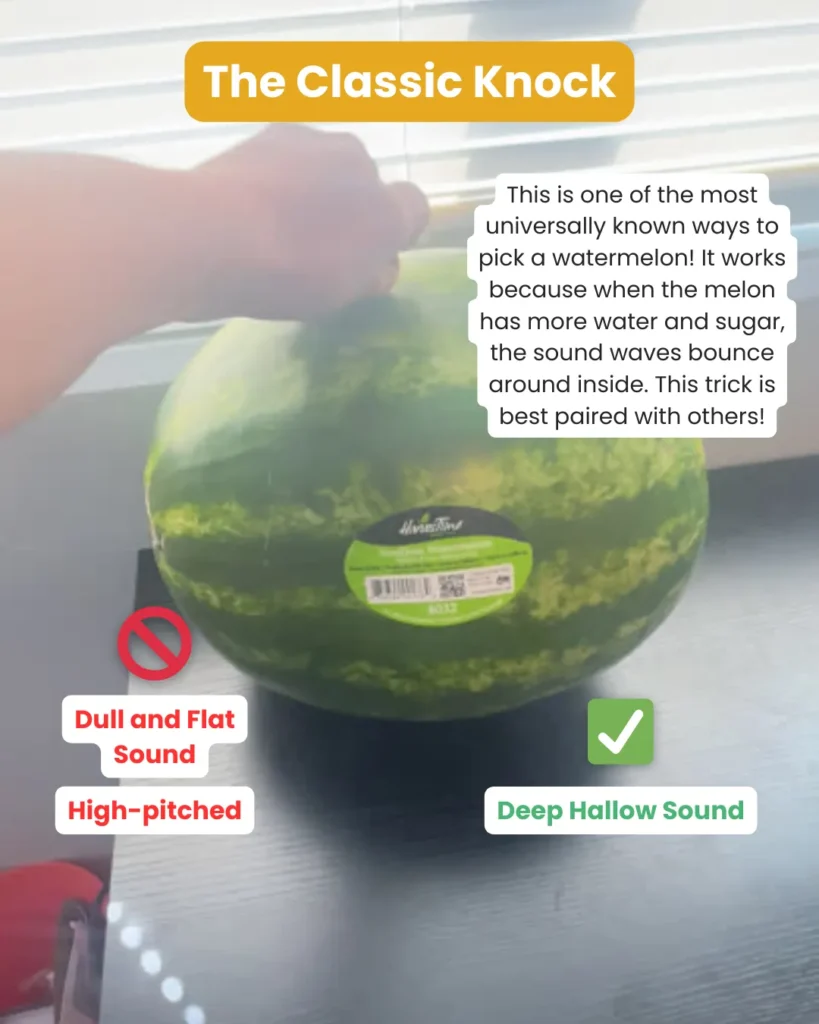
Gently tap the watermelon and listen for a deep, hollow sound. That’s a sign of ripeness. A dull or flat sound can mean the flesh is overripe or underripe. Think “drum,” not “thud.”
The best way to pick a ripe watermelon is to use a combination of these clues rather than relying on just one. With a little practice, you’ll be able to spot a perfectly ripe melon from a mile away! Want more help? Watch our video on what to look for here.
